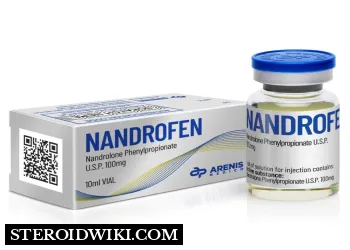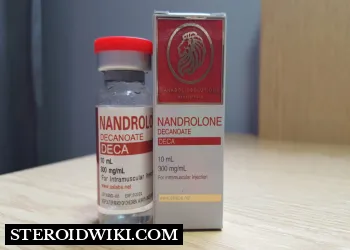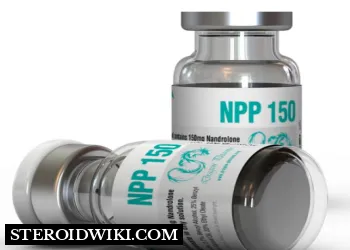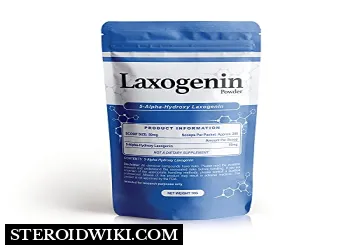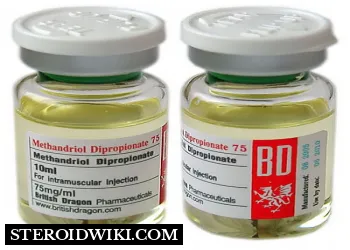Understanding Nandrolone and It's Risks
Table of Contents
Anabolic steroids like nandrolone are used to treat osteoporosis, anaemia, and other ailments. It is testosterone in a synthetic form. While nandrolone usage for muscle building is prohibited in the United States and most other countries, it is used by certain sportsmen. Nandrolone should only be used under the guidance of a healthcare professional due to its potential for significant negative effects.
What is nandrolone?
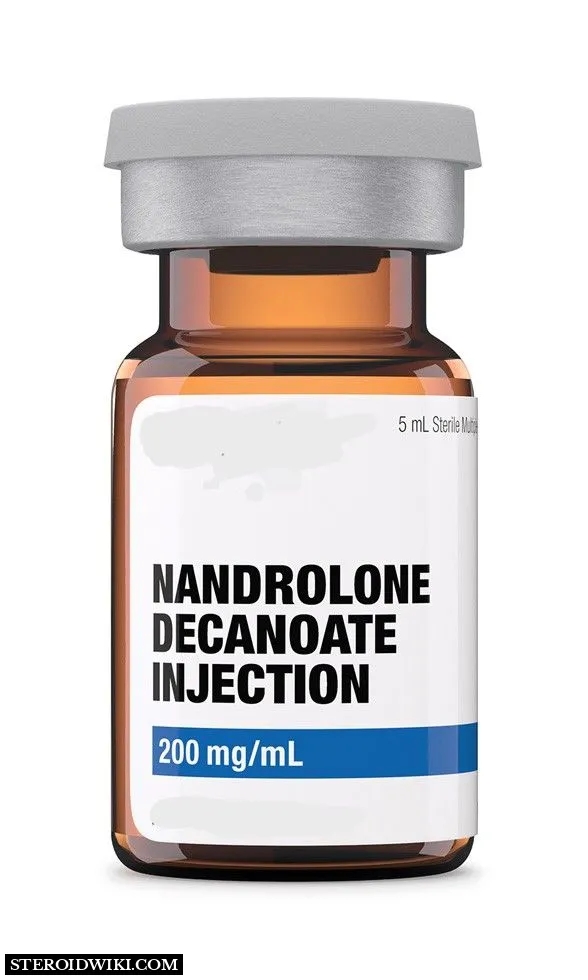
Nandrolone is a synthetic that is made in a lab version of the hormone testosterone. It is sometimes referred to as 19-nortestosterone and nandrolone decanoate. One kind of anabolic androgenic steroid is nandrolone. Medical professionals prescribe Nandrolone to treat some types of anaemia. It can also help build tissue in people with weakened or damaged tissue.
As with many other anabolic steroids, nandrolone is widely misused. Some bodybuilders and teenagers take nandrolone to "bulk up," or increase muscular mass. Some athletes utilize nandrolone to improve their performance. Nandrolone delivers health advantages, but it also carries the risk of major negative effects. You should only use nandrolone under the strict supervision of a healthcare professional.
How does nandrolone work?
Providers administer nandrolone by injection (shot) into a muscle. Once in your body, it works similarly to testosterone. Testosterone is a sex hormone known as androgen. Testosterone also exhibits "anabolic" characteristics. This is why nandrolone is known as an "anabolic-androgenic" steroid.
The information below provides insights on how nandrolone works:
Anabolic
Anabolism is the process of building muscles, bones or other body structures. Testosterone promotes tissue growth and expands muscle mass.
Androgenic
Testosterone is an androgen. It’s most known for stimulating the development of sex characteristics in men and people assigned male at birth (AMAB).
Scientists modeled nandrolone after testosterone because of testosterone’s anabolic (tissue-building) power. They boosted its anabolic properties while weakening its androgenic properties. So, nandrolone has more tissue-building power than testosterone but is a weaker sex hormone.
Still, nandrolone is a sex hormone. The side effects associated with nandrolone occur because it behaves as an added sex hormone in your body.
Structure
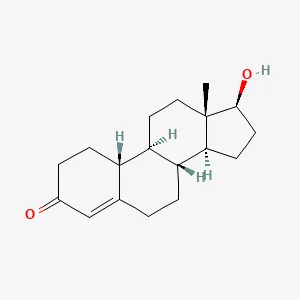
What is nandrolone used for?
The main reason why doctors recommend nandrolone is to treat anaemia linked to chronic renal failure. Not having enough healthy red blood cells is known as anaemia. Nandrolone increases the synthesis of red blood cells.
What Is Nandrolone Used For?
Doctors occasionally recommend nandrolone for the following conditions and traumas:
- Burns
- Allergic responses
- Eye injuries
- Particularly corneal injuries
- Brittle bones (osteoporosis)
- Body wasting (cachexia)
- Anaemia from cancer
- Cancer-related lack of appetite
- Cancers of the breast and prostate
Part of the reason steroids aid in healing is that they reduce immune system activity. Your body uses white blood cells and other substances, which can cause inflammation, to fight against infection and bacteria. Steroids can also minimise tissue damage and inflammation by lowering this immunological activity. The negative is that it might boost your risk of infection.
People also use nandrolone to treat:
- Osteoporosis in people who no longer get periods (postmenopause).
- AIDS-associated wasting away syndrome.
- Chronic kidney disease (CKD).
- Breast cancer
- Some studies suggest that nandrolone can help heal damaged joints.
How should I use this medicine?
Only take nandrolone as directed by a medical professional. Under the Anabolic Steroids Control Act of 1990, the U.S. Drug Enforcement Administration (DEA) lists nandrolone as a Schedule III restricted drug. It is thus unlawful to possess or use nandrolone without a prescription from a qualified healthcare professional.
When prescribing nandrolone, medical professionals take care to find the right dosage. In order to ensure that patients receive nandrolone as safely as possible, they monitor for adverse effects. You must take this medication as prescribed by your doctor.
Side effects of nandrolone
General side effects include:
- Headaches
- Acne
- Diarrhea
- Nausea and vomiting
- Swelling, especially in your feet, ankles and legs (edema)
- Trouble sleeping (insomnia)
- Mood changes, including depression, irritability and aggression
Side effects vary based on your age and sex. Some of these changes are reversible when you stop taking the medicine. Others are permanent. This is why it’s essential that a healthcare provider catches any side effects early and adjusts treatment.
Before puberty, side effects include penis enlargement and frequent erections. After puberty, side effects include:
- Decreased testes size and function (testicular atrophy)
- Low sperm count (oligospermia)
- Persistent, painful erections (chronic priapism)
- Erectile dysfunction
- Inflammation in the tube behind your testicles (epididymitis)
- Painful or irritable bladder
- Changes in sex drive (libido)
- Breast enlargement (gynecomastia)
- Women and people assigned female at birth (AFAB)
Nandrolone may cause you to develop sex characteristics associated with people AMAB. Side effects include:
- Irregular menstrual cycle
- Enlarged clitoris (clitoromegaly)
- Hair growth on your face, chest and back (hirsutism)
- Male pattern baldness (androgenic alopecia)
- Changes in sex drive (libido)
- Deeper voice
Nandrolone can affect bone development in children. It can cause a child’s bones to stop growing before they reach their full height. Your healthcare provider will regularly monitor your child’s bones if they take nandrolone.
What are the benefits of using nandrolone?
Nandrolone can help manage certain conditions. It includes:
- Promotes red blood cell production
- Promotes muscle endurance and healing
- Builds lean muscle mass
- Increases bone density
What are the risks of using nandrolone?
Taking nandrolone without a prescription is especially risky. Many bodybuilders who use nandrolone take it at higher doses than a healthcare provider would safely prescribe. This increases your risk of side effects.
Nandrolone also poses more serious risks, including:
- Blood-filled cysts in your liver (peliosis hepatis): These growths can lead to liver failure and are possibly lethal. Cysts usually go away after therapy is stopped. But frequently, they don't show signs until your illness has gotten worse.
- Liver tumours: The majority of these tumours are benign and disappear when therapy is stopped. However, there have been a few malignant (cancer) cases.
- Atherosclerosis, or hardening of the blood vessels: It is the result of plaque accumulation in the arteries. The accumulation raises your risk of heart attack and stroke and can cause cardiovascular disease.
- Nandrolone can harm the liver and induce heart failure even at the recommended dosages.
Your healthcare provider will take a complete medical history before prescribing nandrolone. Certain allergies or conditions may prevent you from taking it.
Let your provider know if you’re pregnant or breastfeeding (chestfeeding). You shouldn’t take nandrolone during pregnancy. Whether you can pass on nandrolone to your baby in breast milk is unknown. Follow your healthcare provider’s guidance.
Why is nandrolone banned?
Although it’s still FDA-approved to treat certain medical conditions, nandrolone is no longer marketed. It is illegal to use nandrolone without a prescription.
Both the National Collegiate Athletic Association (NCAA) and the World Anti-Doping Agency (WADA) include nandrolone on their prohibited lists. The WADA is an international agency that combats drug use in sports. The organization prohibits performance-enhancing drugs that may endanger athletes.
Summary
Nandrolone can help people with certain conditions regain strength and feel better. Still, because nandrolone behaves like a sex hormone in your body, it can cause side effects. It’s essential to take this medicine under the guidance of a healthcare provider. They can monitor your response and test for signs of complications. They can help maximize the benefits you receive from this medicine while reducing the risks.
References
- Patanè, F.G., Liberto, A., Maria Maglitto, A.N., Malandrino, P., Esposito, M., Amico, F., Cocimano, G., Rosi, G.L., Condorelli, D., Nunno, N.D. and Montana, A., 2020. Nandrolone decanoate: use, abuse and side effects. Medicina, 56(11), p.606.
- P Busardo, F., Frati, P., Di Sanzo, M., Napoletano, S., Pinchi, E., Zaami, S. and Fineschi, V., 2015. The impact of nandrolone decanoate on the central nervous system. Current neuropharmacology, 13(1), pp.122-131.
- Nandrolone Decanoate Nandrolone Decanoate - an overview | ScienceDirect Topics. Available at: https://www.sciencedirect.com/topics/medicine-and-dentistry/nandrolone-decanoate (Accessed: 2 February 2024).
- Johansen, K.L., Mulligan, K. and Schambelan, M., 1999. Anabolic effects of nandrolone decanoate in patients receiving dialysis: a randomized controlled trial. Jama, 281(14), pp.1275-1281.
- Nandrolone: What to Know WebMD. WebMD. Available at: https://www.webmd.com/fitness-exercise/nandrolone-what-to-know (Accessed: 2 February 2024).


